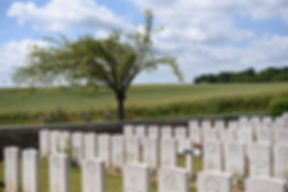



Nicolson, William Hurst
Son of Rev William Millar Nicolson, Presbyterian Minister at St. James’s Park, and Margaret Nicolson, of 2 Belgrave Villas, Cotham Grove. Younger brother of Euphemia, and older brother of Margaret E, Henry D, Janet H, Arthur Mcleod, and Mary H H. Henry and Arthur also attended BGS. Husband of Ella Nicolson, of 15 Grosvenor Street, Edinburgh.
Nicolson was born on 19/09/1870, and attended the School from 1885-1888. He served as a Major in the Army, with the Indian Army, 37th Dogras. Nicolson sadly lost his life on 21/01/1916, as a result of the War.
Nicolson is buried in Amara War Cemetery, Iraq, grave reference XIX. C. 4.
An Account of Service (BGS Chronicle April 1916)
"… of the 37th Dogras, was at the school from 1885 to 1888, and his father the Rev. W. Millar Nicolson, D.Sc., will be remembered by some as a Presbyterian Minister in Bristol at that time. The son attained a high position in the Sixth Classical, went on to Edinburgh University, and as a University Candidate obtained his commission in the Royal Munster Fusiliers in 1892. Thence in 1896 he transferred to the Indian Army, received his captancy in July 1901, and became Major in May 1912. He saw service both in Africa, and on the Indian Frontier, in the North-West ub 1897-1, when he was present at the action at Malakand, and received the medal with clasp, and again in the Tirah Campaign, when he was assistant transport officer. For nine years he serves with the King's African Rifles, and he used his opportunities to make a fine collection of heads of big game. He was a keen sportsman, and a good shot, and a good soldier: early in the year he was killed in action in Mesopotamia."
Morale Amoung the British Troops Falls (Great War Lives Lost)
Friday 21 January 1916 – We Lost 695
This morning at Um-el-Hanna there is a thick mist, and from mid-morning it pours constantly. The Turkish defences are again bombarded from both banks, and from gunboats. 12,000 rounds in all are fired. The forty-six guns available to the British prove inadequate to dislodge or demoralize the Turkish defenders before the assault. There is no attempt to deceive the Turks or any attempt at surprise them and the main assault will be on a very narrow front less than a mile across. No man’s land is 600 yards deep. The attacking units are very under-strength, as a result of the earlier fighting, and from illness. The Meerut Division goes into action with fewer than 4,000 effective men. The 21st Brigade has to be broken up, and its battalions attached to the other Brigades, the 19th and 35th.
The infantry attack goes in half an hour after the last shell has fallen, in clear (but misty) daylight, at 07:45. The Turkish troops – virtually undamaged by the shelling – rise to man their trenches and cut down the infantry in swathes. Very few men reach their trenches. Owing to wet soil, shelling and losses among the operators, the field telephone system break down almost immediately, leaving Brigade, Division and Corps completely in the dark as to what is happening. While various commands are given to reorganize and renew the attack, in the appalling weather and with such chaos in the front lines, no further effort is made. With defeat at the Hanna, the British attempt to relieve Kut is badly delayed. Morale among the British troops falls, with growing doubts about their leaders and dismay at the poor supplies, medical arrangements and ramshackle organization.
Nicolson was one of 2700 soldiers, both British and Indian, who were lost in this attack.
William Hurst Nicolson
Born: 19 September 1870
School dates: 1885 - 1888
Rank: Major
Regiment: Indian Army, 37th Dogras
Died: 21 January 1916
Age: 44
Remembered: Amara War Cemetery, Iraq
Reference: XIX. C. 4.
Cemetery Site Map (CWGC)
(Click to zoom)
